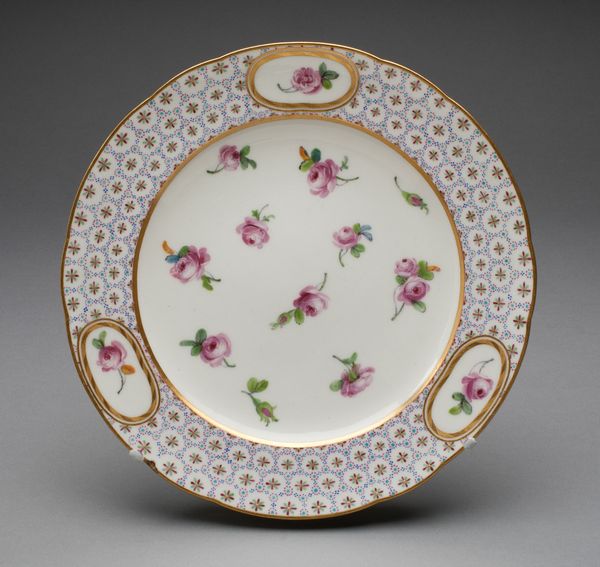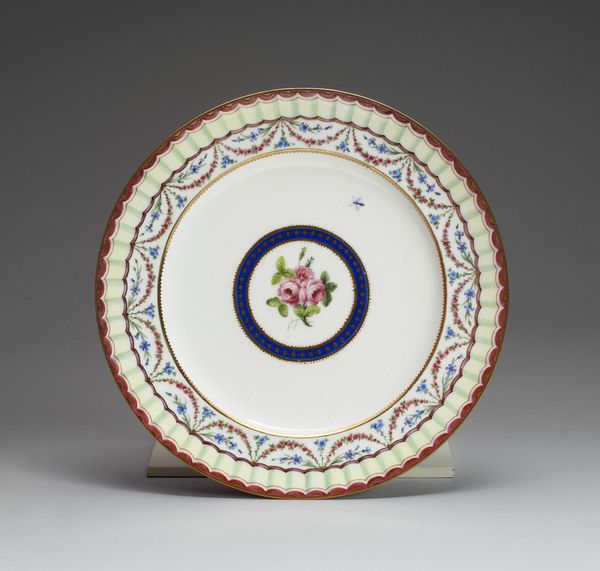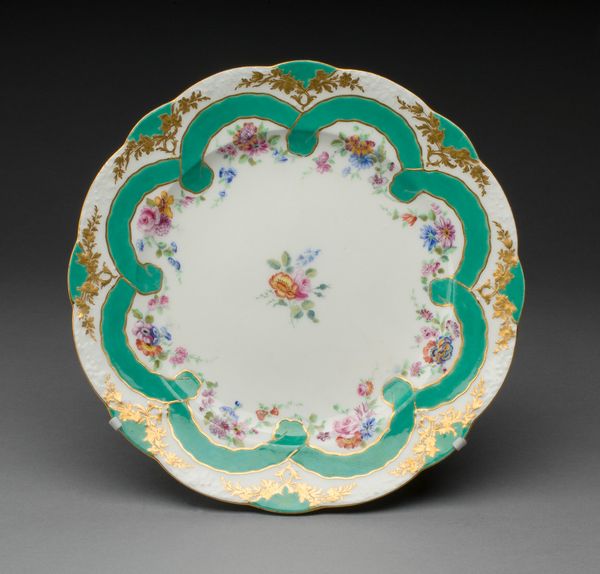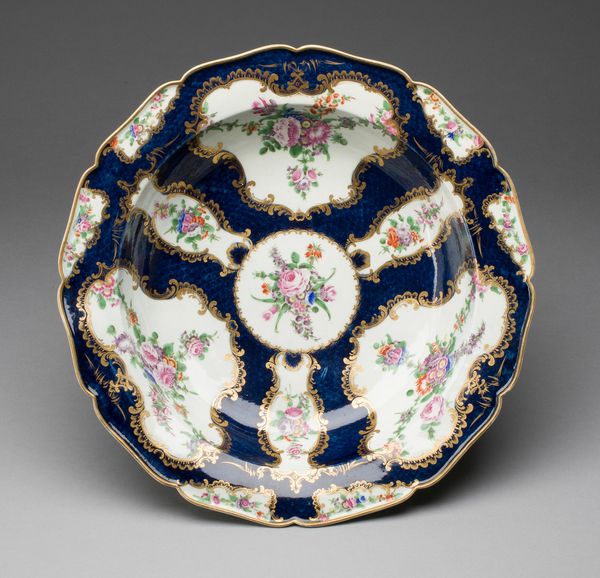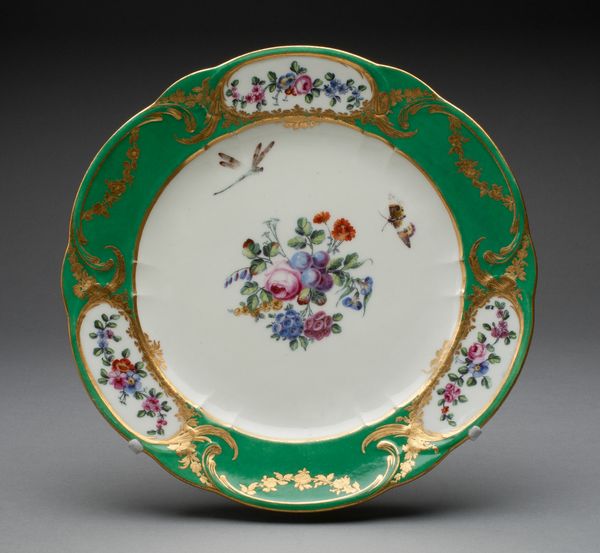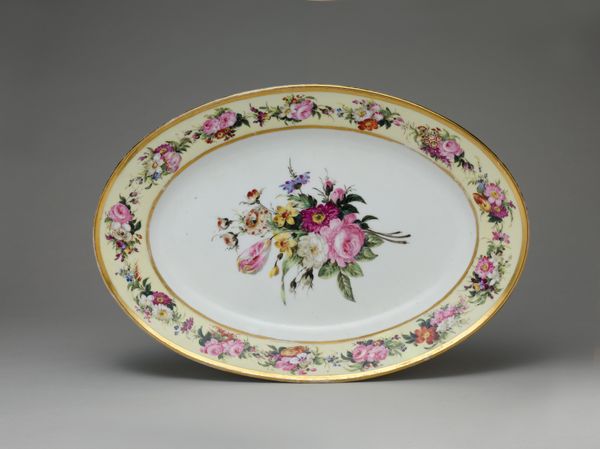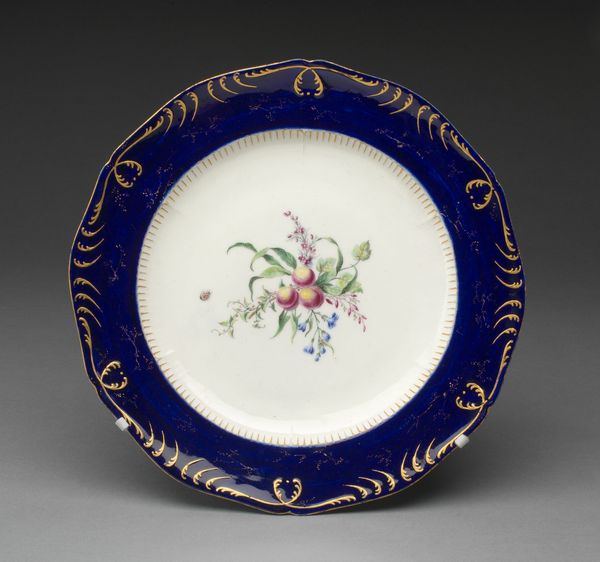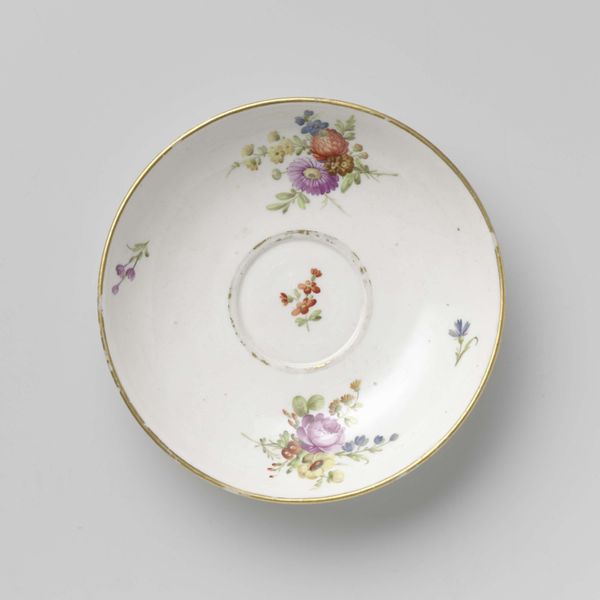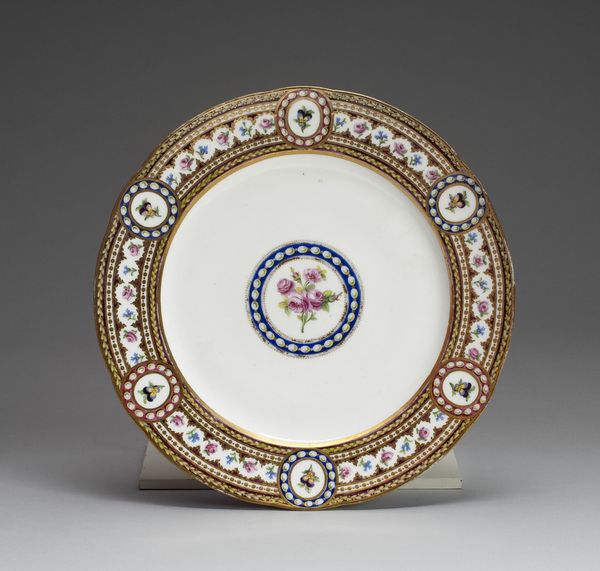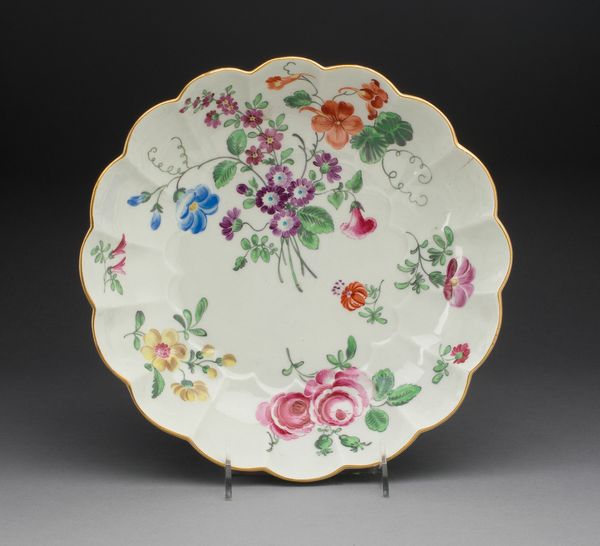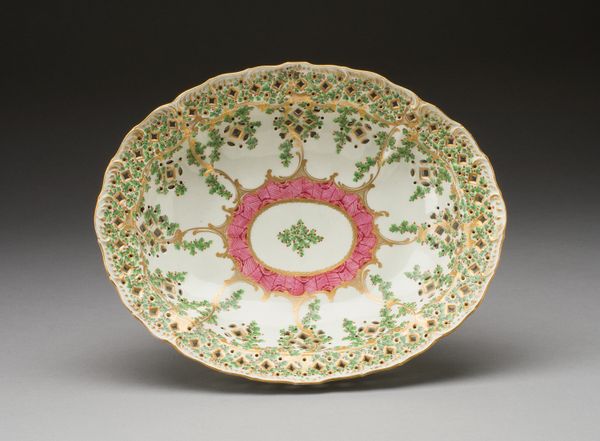
Dimensions: Diam. 24.8 cm (9 3/4 in.)
Copyright: Public Domain
Curator: What a beautiful piece. We're looking at a plate crafted in 1771 by the Manufacture nationale de Sèvres, now held at The Art Institute of Chicago. Its delicate porcelain surface is a hallmark of the Rococo period. Editor: It feels…frivolous. In a delightful way. The bright white center dotted with little pink roses, surrounded by that strong cobalt blue border. It’s almost aggressively cheerful, isn’t it? Curator: "Aggressively cheerful"—I like that! It speaks to the role these pieces played in court life. Luxury goods, like this plate, functioned as visual declarations of power and taste. Consider the labor involved in creating such refined porcelain and detailed painted flowers. It represents significant wealth and privilege. Editor: And the message that sends. Such blatant display reinforces existing power dynamics, reminding everyone of their place. The cobalt blue alone, created using expensive pigments like cobalt oxide, shows the wealth. While seemingly a delicate artwork, there’s a strong statement of societal order. Curator: Precisely! It reflects the highly stratified society of pre-revolutionary France, and Sèvres porcelain, supported by royal patronage, directly catered to that elite class. The decorative arts often become key objects that showcase not only power and wealth, but the artistic control of a society. Editor: You look at it, this precious object intended for individual use. Consider how the Rococo style embraced asymmetry and ornamental excess, qualities certainly visible in this plate's gilded flourishes and lavish decoration. Was that a rebellion or simply the blindness of the monarchy before an eruption of society against it all? The porcelain itself represents so much of that history. Curator: Indeed. The very existence of the plate speaks volumes about the inequalities of the era, a time when many faced immense hardship while a select few dined on exquisitely crafted wares. Looking at it today encourages reflections of wealth and poverty and the decorative arts in the Rococo era. Editor: Yes, beyond its surface charm lies a potent symbol of the socio-political landscape that it occupied, now sparking dialogues around art, societal structures, and social identity, which I believe is how art should operate. Curator: A single plate reflecting centuries of art and socio-political structures, a truly valuable artwork that can engage current events from centuries past.
Comments
No comments
Be the first to comment and join the conversation on the ultimate creative platform.
